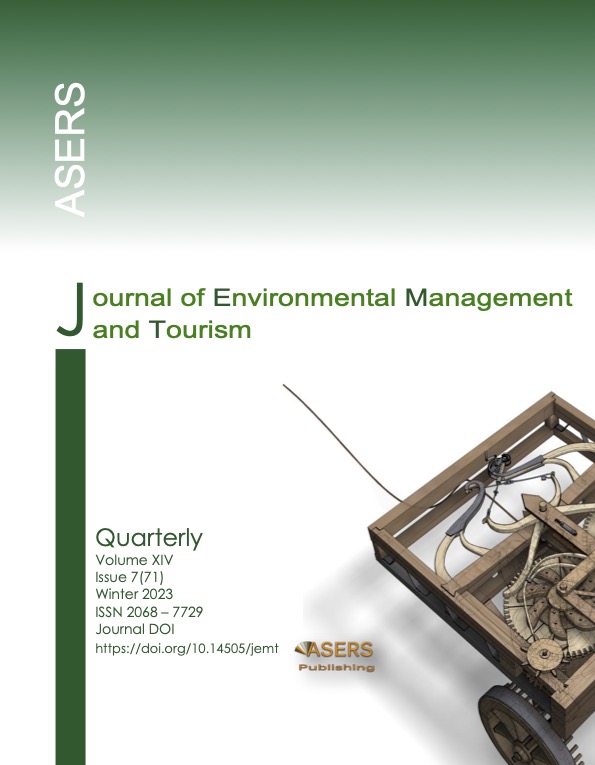Mitigating Pollution at the Source and Textile Waste Minimization in Poland: Findings from In-House Research
Abstract
Currently, since the fast fashion phenomenon has existed, the number of new collections appearing in chains and online stores has increased from four to about fifty per year, thus the amount of clothing bought by one person per year is on average 16 kilograms, and as a result, the amount of clothing thrown away by Poles themselves is approximately 2.5 million tons of waste per year. From 1996 to 2012, the amount of clothing purchased per capita increased globally by 40%. In the years 2000–2014 it was 60% more. The problem needs to be solved because it causes a lot of damage to the environment and pollutes the environment a lot. All we need to do is extend the life cycle of clothes by 10% and we will save as much as three million tons of CO2 and 150 million liters of water per year. The aim of the article is to analyze two closely related areas: customers' awareness of the impact of clothing production on the environment and their attitude towards reusing unwanted clothing, and solutions implemented by e-shops in the fashion industry in the area of consumer returns management. The analysis used the results of secondary research and the author's own periodic research from 2017-2023.
References
[2] Dudel P. 2022. Factors of enterprise development the second-hand industry in the light of research, Academy of Management, 6(4).
[3] Ferraro, C., Sands, S. I., and Brace-Govan, J. 2016. The role of fashion ability in second hand shopping motivations. Journal of Retailing and Consumer Services, 32: 262-268. DOI:https://doi.org/10.1016/j.jretconser.2016.07.006
[4] Jagiełło D. 2022. Reverse logistics in waste management on the example of the fashion industry, Łódź.
[5] Kędzia K. 2015. Discussion on the potential of the clothing industry in Poland and the activities of Inditex in Spain - opportunities and development zones. Technology and Product Quality.
[6] Kowalski, M., and Salerno-Kochan, R. 2018. Socio-economic aspects of the development of sustainable products in the textile and clothing industry. Scientific Journals of the Krakow University of Economics, 5: 79-95.
[7] L'Abbate, P., et al. 2018. Environmental analysis of polyester fabric for ticking, Journal of Cleaner Production, 172. DOI: https://doi.org/10.1016/j.jclepro.2017.10.045
[8] Leal Filho W., et al. 2019. A review of the socio-economic advantages of textile recycling, Journal of Cleaner Production, 218: 10-20. DOI: https://doi.org/10.1016/j.jclepro.2019.01.210
[9] Majumdar, A., Shukla, S., Anjali Singh, A., and Arora, S. 2020. Circular fashion: Properties of fabrics made from mechanically recycled poly-ethylene terephthalate (PET) bottles, Resources, Conservation and Recycling, 161, 104915. DOI: https://doi.org/10.1016/j.resconrec.2020.104915
[10] Palmowska, M., and Karasek, 2019. Fashion market in Poland. Challenges. Warsaw
[11] Ruben, A. 2023. The secondhand revolution: Global market set to double in the next 4 years, https://www. linkedin.com/pulse/secondhand-revolution-global-market-set-double-next-4-years-troveco
[12] Šajn, N. 2022. Textiles and the environment, Members' Research Servicem
[13] Sandin, G., Peters, G.M. 2018. Environmental impact of textile reuse and recycling - A Review. Journal of Cleaner Production, 184: 353-365. DOI: https://doi.org/10.1016/j.jclepro.2018.02.266
[14] Sharda, N. L., and Kumar, M. 2015. Multifarious approaches to attain sustainable fashion, The Nordic Textile Journal, 1, 31-37.
[15] Skurpel, D. 2019. Logistics service in e-commerce. Value for the customer, Publishing House of the University of Łódź
[16] Stotz L., Kane G. 2015. Facts on the global garment industry, clean clothes campaign, https://cleanclothes.org/ resources/publications/factsheets/general-factsheet-garment-industry-february-2015.pdf/view
[17] Sung, K. 2015. A review on upcycling: current body of literature, knowledge gaps and a way forward, International Conference on Environmental, Cultural, Economic and Social Sustainability, At: Venice, 17 (4), https://core.ac.uk/download/pdf/228200932.pdf
[18] Szydło, J., and Potmalnik, E. 2022. Purchasing decisions of Generation Z representatives on the example of the fashion industry, Marketing i Rynek, 22 (9).
[19] Villalba, G., Segarra, M., Fernández, A.I., Chimenos, J.M., and Espiell, F. 2002. A proposal for quantifying the recyclability of materials. Resources, Conservation and Recycling. 37(1): 39-53. DOI:https://doi.org/10.1016/ S0921-3449(02)00056-3
[20] Żurek, J. 2023. Returns in e-commerce. https://blog.arvato.pl/zwroty-w-e-commerce/
[21] Central Statistical Office, stat.gov.pl
[22] Department of Economic Analysis, PKO BP, Clothing industry, international position of Polish producers in the face of the crisis caused by the COVID-19 pandemic.
[23] European Environment Agency. 2023. Textiles in Europe's circular economy.
[24] European Parliament. 2020. Impact of textile production and textile waste on the environment, https://www.europarl.europa.eu/news/pl/headlines/society/20201208STO93327/wplyw-produkcji-tekstyliow-i-odpadow-tekstylnych-na-srodowisko-infografiki
[25] Sustainable fashion market. Guide to the EU Strategy for Circular and Sustainable Textiles. 2023. https://ungc.org.pl/wp-content/uploads/2022/11/Raport_Zrownowazony_Rynek_Modowy.pdf
[26] The impact of the global coronavirus pandemic on the clothing industry. Office of International Strategy and Analysis. 2020, PKO Bank Polski, https://wspieramyeksport.pl/api/public/files/1954/Odziez_lipiec_2020.pdf
[27] ThredUp, Resale Report. 2023, https://cf-assets-tup.thredup.com/resale_report/2023/ thredUP_2023_Resale _Report_FINAL.pdf
[28] https://less.store/
[29] https://secondhandy.com.pl/
[30] https://www.statista.com/
[31] https://uce-pl.com/news/blisko-50-proc-polakow-uwaza-ze-sklepy-sprzedaja-ubrania-coraz-gorszej-jakosci
[32] https://ungc.org.pl
Copyright© 2025 The Author(s). Published by ASERS Publishing 2025. This is an open access article distributed under the terms of CC-BY 4.0 license.
